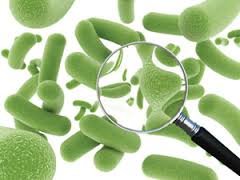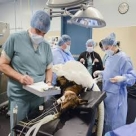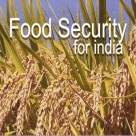Guest Book
Dr. Magna Rose Thomas,
13 - Dec - 2015
Probiotics and their health implications

PROBIOTICS AND THEIR HEALTH IMPLICATIONS
Author: Dr. Magna Rose Thomas,
Assistant Professor, Department of Dairy Sciences, COVAS, Pookot
The word “probiotic” comes from Greek and means “for life”. ”Probiotic” is used to refer to cultures of live microorganisms which, when administered to humans or animals, improve properties of indigenous microbiota. In the food industry, the term is described as “live microbial food ingredients which when used in sufficient amounts which will confer beneficial effects to health of the host ”. The important factor for a microorganism to be considered probiotic is that, it should survive passage through the stomach and maintain its viability and metabolic activity in the intestine. Native inhabitants of the human or animal gastrointestinal tract, such as lactobacilli and bifidobacteria, are considered to be probiotic for their stress tolerance, which increases their use in probiotic applications. Microorganisms traditionally grown in fermented foods, such as lactic acid bacteria, propionibacteria and yeasts, are also considered for these applications. It is essential that commercialized probiotic products which make health claims meet the minimum criterion of one million viable probiotic cells per millilitre of product at the expiration date. Accordingly, the minimum dosage of probiotic cells per day for any beneficial effect on the consumer is considered to be 108–109 probiotic CFU per ml or CFU per g which corresponds to an intake of 100 g product containing 106–107 CFU per ml or CFU per g per day. The human intestinal tract constitutes a complex ecosystem of microorganisms. The bacterial population in the large intestine is very high and can reach maximum counts of 1012 CFU per g. In the small intestine, the bacterial content is considerably lower at only 104–108 CFU per g. In the stomach only 101-102 CFU per g are found due to the low pH of the environment. It is known that microbiota in the human intestine changes during human development. The intestine of new born babies is fully sterile, however immediately after birth, colonization of many kinds of bacteria begins. On the first and second days after birth, coliforms, enterococci, clostridia and lactobacilli have been shown to be present in infants’ faeces. Within three to four days, bifidobacteria begins colonization and becomes predominant around the fifth day. Simultaneously, coliform counts decrease. Breast-fed babies show 1 log-count more of bifidobacteria in faeces than bottle-fed babies. Enterobacteriaceae, streptococci, and other putrefactive bacteria counts are higher in bottle fed babies, suggesting that breast-fed babies are more resistant to gastrointestinal infections than the bottle-fed infants. In addition to the microbiota changes that occur during human aging, the microbiota in the gastrointestinal system can also change because of the food and health conditions of an individual. For example, use of antibiotics can damage the equilibrium of intestinal microbiota, reducing counts of bifidobacteria and lactobacilli and increasing clostridia. The ensuing imbalance can cause diarrhoea in elderly and immunocompromised people. To help improve the balance of intestinal microbiota, probiotic microorganisms can be added to the human diet in order to stimulate the growth of preferred microorganisms, crowd out potentially harmful bacteria, and reinforce the body’s natural defense mechanisms. The selection of probiotic microorganisms is based on safety, functional and technological aspects. Before probiotic strains can be delivered to consumers, they must first be able to be manufactured under industrial conditions. They must then survive and retain their functionality during storage as frozen or freeze-dried cultures, as well as in the food products into which they are finally formulated. Moreover, they must be able to be incorporated into foods without producing off-flavours or textures. Functional food requirements must take into consideration the following aspects in relation to the probiotics: The preparation should remain viable for large-scale production; it should remain stable and viable during storage and use; it should be able to survive in the intestinal ecosystem. The role of balanced nutrition for health maintenance has attracted the attention of the scientific community, which in turn has produced numerous studies in order to prove the performance of certain foods in reducing the risk of some diseases. There has also been considerable growing interest in encouraging research into new natural components. In a healthy host, a balance exists among members of the gut microbiota, such that potential pathogenic and non-pathogenic organisms can be found in apparent harmony. In the case of bacterial infection, this balance can become disturbed, leading to often dramatic changes in the composition. For most bacterial infections, nonspecific antibiotics are used, killing both non-pathogenic members of gut microbiota as well as pathogenic members. This can lead to a substantial delay in the restoration of healthy gut microbiota. The restoration of the gut microbiota balance is believed to be important because maintaining a healthy and balanced gut microbiota throughout life is thought to help preserve health and favor longevity. The metabolic capacity of gut bacteria is extremely diverse. This diversity is influenced by the large number of bacterial genera and species. Lactic acid species are present, as well as peptide-degrading bacteria, amino acids, and other methanogenic bacterial components of the gut microbiota which grow with the intermediate products of fermentation such as hydrogen, lactate, succinate and ethanol. In host’s diet residue (matter undigested by its digestive system including resistant starch, fibres, proteins and peptides) substrates for primary fermentation can be found. Other important available substrates derive from mucin glycoproteins, exfoliated epithelial cells and pancreatic secretions. Hydrolysis and carbohydrate metabolism in the large intestine is influenced by a variety of physical, chemical, biological and environmental parameters. Probably the nature and quantity of available substrate that has greater meaning, making the diet easier and the main mechanism by which to influence the profile of fermentation. Other factors affecting the colonization and growth of bacteria in the intestine are intestinal pH, which inhibits the production of metabolites (acids and peroxides) and specific inhibitory substances (bacteriocins), bile salts and molecules and cells which constitute the immune system. Knowledge of intestinal gut microbiota and their interactions led to the development of food strategies aimed at the stimulation and maintenance of normal bacteria present in the gut. It is possible to increase the number of health-promoting microorganisms in gut microbiota through the introduction of probiotics in the diet. The probiotics will selectively modify the composition of the gut microbiota, providing the probiotic microorganisms demonstrate a competitive advantage over other bacteria in the ecosystem. Probiotic therapeutic properties of probiotics include Influence on host gut microbiota and pathogenic bacteria, improvement of specific enzymatic activities, Production of antibacterial substances, competitive exclusion of pathogenic bacteria, induction of defensin production, improvement of intestinal barrier function, modulation of host immune functions, modulation of intestinal carcinogenesis and modulation of cholesterol uptake.
Therapeutic applications of probiotics
Probiotics have considerable potential for preventive and therapeutic applications in gastrointestinal disorders. However, it is important to note that many probiotic health claims have not yet been substantiated through experimental evidence. In addition, the efficacy demonstrated for a single given bacterial strain cannot be extrapolated to other probiotic organisms. Moreover, the mechanisms underlying probiotic action have not yet been fully elucidated. A better understanding of these mechanisms will be able to shed light on the disparate clinical data and provide new tools to help the prevention or treatment of health disorders. There is a growing body of evidence that ingested beneficial bacteria, called probiotics, can beneficially modulate chronic intestinal inflammation, diarrhoea, constipation, vaginitis, irritable bowel syndrome, atopic dermatitis, food allergies and liver disease. Probably the most promising area is the alleviation of symptoms linked to inflammatory bowel diseases (IBD), a growing health concern. Urinary tract infections (UTIs) are a common and frequently recurrent infection among women. Depletion of vaginal lactobacilli is associated with UTI risk, which suggests that repletion of the bacteria may be beneficial. However, it is important to note that many probiotic health claims have not yet been substantiated through experimental evidence. In addition, the efficacy demonstrated for a single given bacterial strain cannot be extrapolated to other probiotic organisms. Moreover, the mechanisms underlying probiotic action have not yet been fully elucidated. A better understanding of these mechanisms will be able to shed light on the disparate clinical data and provide new tools to help the prevention or treatment of health disorders.
Application of probiotic bacteria in dairy foods
There is evidence that food matrices play an important role in the beneficial health effects of probiotics on the host. Fermented foods, particularly dairy foods, are commonly used as probiotic carriers. Fermented beverages provide an important contribution to the human diet in many countries because fermentation is an inexpensive technology which preserves food, improves its nutritional value and enhances its sensory properties. However, the increasing demand for new probiotic products has encouraged the development of other matrices to deliver probiotics, such as ice cream, infant milk power and fruit juice. Cultures containing Streptococcus salivarius ssp. thermophilus and Lactobacillus delbrueckii ssp. Bulgaricus, Bifidobacterium longum and Lactobacillus acidophilus were used in low-fat ice cream, and it was verified that culture bacteria did not decrease in the yogurt during frozen storage. Also, the presence of probiotic bacteria did not alter the sensory characteristics of the ice cream. The ice cream matrix may offer a good vehicle for probiotic cultures due to its composition, which includes milk proteins, fat and lactose, as well as other compounds. Moreover, its frozen state contributes to its efficiency. However, a probiotic ice cream product should have relatively high pH values –5.5 to 6.5, in order to favour an increased survival of lactic cultures during storage. The lower acidity also results in increased consumer acceptance, especially among consumers who prefer milder Products. Growth of a probiotic yeast, Saccharomyces boulardii, in association with the bio-yogurt microflora, which is done by incorporating the yeast into commercial bio-yogurt, has been suggested as a way to stimulate growth of probiotic organisms and to assure their survival during storage. On studying the ability of probiotic yeast to grow and survive in dairy products, namely bio-yogurt, UHT yogurt and UHT milk,S. boulardii was incorporated into these dairy products and stored at 4 ºC over a 4-week period. And, it was observed that the probiotic yeast species, S. boulardii, had the ability to grow in bioyogurt and reach maximum counts exceeding 107 CFU g-1. The number of yeast populations was substantially higher in the fruit-based yogurt, mainly due to the presence of sucrose and fructose derived from the fruit. Despite the inability of S. boulardii to utilize lactose, the yeast species utilized available organic acids, galactose and glucose derived from bacterial metabolism of the milk sugar lactose present in the dairy products. The viability of strains of L. acidophilus and Bifidobacterium animalis sp. lactis in stirred yoghurts with fruit preparations of mango, mixed berry, passion fruit and strawberry was evaluated during shelf-life and it was observed that regardless of concentrations, the addition of any of the fruit preparations had no effect on the counts of the two probiotics tested. Fermented milks supplemented with lemon and orange fibres increased the counts of L. acidophilus and L. casei during cold storage compared to the control set. Probiotic foods are currently primarily found in fermented milk drinks and yogurt, both of which have limited shelf life compared to cheeses. Incorporation of probiotic cultures in cheeses offers the potential not only to improve health but also product quality. It also opens the way to increasing the range of probiotic products on the market. The manufacture of most cheeses involves combining four ingredients: milk, rennet, microorganisms and salt. These are processed using a number of common steps such as gel formation, whey expulsion, acid production and salt addition. Variations in ingredient blends and subsequent processing have led to the evolution of all cheese varieties. Cheeses are dairy products which have a strong potential for delivering probiotic microorganisms into the human intestine, due to their specific chemical and physical characteristics. Cheeses have higher pH levels, lower titratable acidity, higher buffering capacity, more solid consistency, relatively higher fat content, higher nutrient availability and lower oxygen content than yogurts. These qualities protect probiotic bacteria during storage and passage through the gastrointestinal tract. As mentioned above, the physicochemical properties of food influence probiotic bacteria survival in the digestive tract, due to the low pH in the stomach, typically between 2.5 and 3.5 and the anti-microbial activity of pepsin that serve as effective barriers against the entrance of bacteria into the intestinal tract. Values of pH between 1 and 5 are commonly employed in determining the in vitro acid tolerance of Lactobacillus and Bifidobacterium spp. Bile salt concentrations between 0.15% and 0.3% have been recommended as appropriate for selection of probiotic bacteria for human consumption. A variety of microorganisms, typically food-grade lactic acid bacteria (LAB), have been evaluated for their probiotic potential and have been applied as adjunct cultures in various food products or therapeutic preparations . Lactobacillus and Bifidobacterium species may be found in many foods; some are frequently regarded as probiotics due to their capacity to improve certain biological functions in the host. Complex interactions occur among resident microbiota, epithelial and immune cells and probiotics. These interactions play a major role in the development and maintenance of the beneficial activities for healthy humans. Recommendations for the minimum viable counts of each probiotic strain in gram or millilitre of probiotic products vary when it comes to providing health benefits related to probiotic organisms. However, populations of 106-107 CFU/g in the final product have been shown to be more acceptable as efficient levels of probiotic cultures in processed with numbers attaining 108 - 109 CFU when provided by a daily consumption of 100 g or 100 mL of probiotic food, and hence benefiting human health. It is important to emphasize that the incorporation of probiotic cultures into cheeses would produce functional foods only if the cultures remained viable in recommended numbers during maturation and shelf life of the products. One of the preconditions for a bacterial strain to be called probiotic is the strain’s ability to survive in the gastrointestinal environment, although the importance of viability for the beneficial effects of probiotics has not been well defined since inactivated and dead cells can also have immunological and health-promoting effects. Moreover, there are significant technological challenges associated with the introduction and maintenance of high numbers of probiotic microorganisms in foods that depend on the form of the probiotic inoculant, and with the viability and maintenance of the food product up to the time of consumption. Spray drying has been used as a preservation method for microbial cultures. spray-dried probiotic milk powder containing the probiotic Lactobacillus paracasei ( 1 x 109 CFU per g of L. paracasei) could be used as adjunct inoculums during probiotic Cheddar cheese manufacture, without any adverse effects on the cheese. The researchers’ data shows that probiotic spray-dried powder may be a useful means for adding probiotic strains to dairy products. Numerous scientific papers have been published on the development of fresh cheeses containing recognized and potentially probiotic cultures. They have described suitable viable counts as well as a positive influence on texture and sensorial properties of the cheeses. In addition, cottage cheese is a healthy alternative to many other cheeses by virtue of its low fat content. The probiotic bacterium exhibited satisfactory resistance to low pH values and to high concentrations of bile salts. These products has proven to be an adequate vehicle for probiotic bacteria during storage and until consumption. It offers offer a certain degree of protection of the viability of bacteria during the in vitro simulation of gastric transit. Further probiotics can be used to enhance flavor, texture, and a produce a high level of proteolysis.
Conclusion
Probiotic microorganisms, including bacteria and yeasts, are attracting a growing interest due to their promising physiological effects as well as the value they add to probiotic-containing food products. There is a growing body of evidence that probiotics may play a beneficial role in human health. Established effects in humans include alleviation of symptoms linked to lactose intolerance or to irritable bowel syndrome. They also include reduced diarrhoea associated with antibiotic treatment, rotavirus or traveller’s diseases. It should be emphasized that the beneficial properties of probiotic microorganisms are highly dependent on the strains, which means that each strain or product requires demonstration of the specific effects in vivo. The possibility of using certain probiotics to modulate the immune system, particularly at the mucosal level is the most promising application. In this respect, promising healing effects were obtained using the probiotic mixture VSL#3 on ulcerative colitis patients. These clinical studies, which still need to be confirmed by larger studies, strongly suggest that selected strains of probiotics may help in treating the bowel diseases which constitute a growing health concern in developing countries. Clearly, animal studies suggest other promising probiotic effects including inflammatory diseases, allergies and associated asthma, and colorectal cancer. These applications open exciting avenues that must be investigated at both molecular and clinical levels. Understanding the impact of ingested bacteria on health, as well as the impact of gut microbiota perturbation (dysbiosis) on emerging diseases, including immune disorders and cancer remains a great challenge. In developed countries, gut microbiota have evolved with a reduced diversity of bacterial species. This is particularly true in Crohn’s disease patients who lack immune modulatory anti-inflammatory bacteria. A similar reduced diversity was also described in the case of colorectal cancer, confirming the involvement of dysbiosis in digestive cancers. The composition of gut microbiota is linked to long term dietary patterns. This suggests that ingested bacteria can participate in the prevention and/or treatment of emerging diseases. This hypothesis has been reinforced by recent epidemiological studies which show that raw milk prevents the onset of allergy and asthma in children which could be attributed to the protective immunomodulatory role of raw milk bacteria. Most interestingly, bacterial species used as dairy starters display promising properties in this field. For example, immunomodulatory and anti-inflammatory properties were described in certain strains of Propionibacterium freudenreichii , Streptococcus thermophiles, Lactobacillus delbrueckii subsp. bulgaricus and subsp. lactis as well as Lactobacillus helveticus . Modulation of colon cancer cell growth was also reported in vitro and/or in animal models for P. freudenreichii, when the cells were exposed to yogurt containing S. thermophilus and L. bulgaricus and L. helveticus . Future trends may thus include the development of specific fermented dairy products designed for specific population. These could use bacteria strains and employ both technological capabilities and probiotic potential to affect immune system modulation, gut physiology and cancer cells.
References
Araujo, E. A., Carvalho, A. F., Leandro, E. S., Furtado, M.M., Moraes, C. A. (2010). Development of a symbiotic cottage cheese added with Lactobacillus delbrueckii UFV H2b20 and inulin. Journal of Functional Foods, 2, 85-89.
Azcarate-Peril, M. A., Sikes, M., Bruno-Barcena, J. M. (2011). The intestinal microbiota, gastrointestinal environment and colorectal cancer: a putative role for probiotics in prevention of colorectal cancer? Am. J. Physiol Gastrointest. Liver Physiol,, 301:G401-G424.
Benton, D., Williams, C., Brown, A. (2007). Impact of consuming a milk drink containing a probiotic on mood and cognition. European Journal of Clinical Nutrition, 61, 355–361.
Braun-Fahrlander, C., & Von, M. E. (2011). Can farm milk consumption prevent allergic diseases? Clin. Exp. Allergy, 41:29-35.
Charteris, W. P., Kelly, P. M., Morelli, L., Collins, J. K. (1998). Development and application of in vitro methodology to determine the transit tolerance of potentially probiotic Lactobacillus and Bifidobacterium species in the upper human gastrointestinal tract. Journal of Applied Microbiology, 84, 759–768.
Chen, W. J. L., Anderson, J. W., Jennings, D. (1984). Propionate may mediate the hypocholesterolemic effects of certain soluble plant fibers in cholesterol-fed rats. Proc. Soc. Exp. Biol. Med,175, 215-218. Chen, W., Liu, F., Ling, Z., Tong, X., Xiang, C. (2012). Human intestinal lumen and mucosaassociated microbiota in patients with colorectal cancer. PLoS. ONE., 7:e39743.
Clancy, R. (2003) Immunobiotics and the probiotic evolution. FEMS Immunology and Medical Microbiology, 38, 9-12.
Cliffe, A. J., Marks, J. D.; Mulholland, F. (1993). Isolation and characterization of non-volatile flavors from cheese: Peptide profile of flavor fractions from Cheddar cheese, determined by reverse-phase high performance liquid chromatography. International Dairy Journal, 3, 379–387.
Collado, M. C., Isolauri, E., Salminen, S., Sanz, Y. (2009). The impact of probiotic on gut health. Curr. Drug Metab, 10:68-78. Costello, E. K., Lauber, C. L., Hamady, M., Fierer, N., Gordon, J. I., Knight, R. (2009) Bacterial community variation in human body habitats across space and time. Science, 326, 1694-1697.
Cousin, F. J., Jouan-Lanhouet, S., Dimanche-Boitrel, M. T., Corcos, L., Jan, G. (2012). Milk Fermented by Propionibacterium freudenreichii Induces Apoptosis of HGT-1 Human Gastric Cancer Cells. PLoS. ONE., 7:e31892.
Crittenden, R. G. Prebiotics. In: Tannock, G. W. (Ed.). (1999). Probiotics: a critical review. Norfolk: Horizon Scientific Press, 141-156.
Cruz, A. G., Buriti, F. C. A., Souza, C. H. B., Faria, J. A. F., Saad, S. M. I. (2009a). Probiotic cheese: health benefits, technological and stability aspects. Trends in Food Science & Technology, 20, 344-354.
Cruz, A.G., Antunes, A.E.C., Sousa, A.L.O.P., Faria, J.A.F., Saad, S.M.I. (2009b). Ice-cream as a probiotic food Carrier. Food Research International, 42, 1233–1239.
Cruz, A.G., Faria, J.A.F., Van Dender, A.G.F. (2007). Packaging system and probiotic dairy foods. Food Research International, 40, 951–956.
Davidson, R.H., Duncan, S.E., Hackney, C.R., Eigel, W.N., Boling, J.W. (2000). Probiotic Culture Survival and Implications in Fermented Frozen Yogurt Characteristics. Journal of Dairy Science, 83, 666–673.
de Moreno, L. A., & Perdigon, G. (2010). The application of probiotic fermented milks in cancer and intestinal inflammation. Proc. Nutr. Soc., 69:421-428.
Deutsch, S. M., Parayre, S., Bouchoux, A., Guyomarc'h, F., Dewulf, J., Dols-Lafargue, M., Baglinière, F., Cousin, F. J., Falentin, H., Jan, G., Foligné, B. (2012). Contribution of surface beta-glucan polysaccharide to physicochemical and immunomodulatory properties of Propionibacterium freudenreichii. Appl. Environ. Microbiol., 78:1765-1775.
Emiliane Andrade Araújo, Ana Clarissa dos Santos Pires, Maximiliano Soares Pinto, Gwénaël Jan and Antônio Fernandes de Carvalho (2015). Probiotics in Dairy Fermented Products. http://dx.doi.org/10.5772/51939
Espirito Santo, A.P., Perego, P., Converti, A., Oliveira, M.N. (2011). Influence of food matrices on probiotic viability: A review focusing on the fruity bases. Trends in Food Science & Technology, 22, 377-385.
Foligné, B., Deutsch, S. M., Breton, J., Cousin, F. J., Dewulf, J., Samson, M., Pot, B., Jan, G. (2010). Promising immunomodulatory effects of selected strains of dairy propionibacteria as evidenced in vitro and in vivo. Appl. Environ. Microbiol., 76:8259-8264.
Fuller, R. (1989). Probiotics in man and animals. Journal of Applied Bacteriology, 66, 365–378.
Gadaga, T. H., Mutukumira, A. N., Narvhus, J. A., Feresu, S. B. (1999). A review of traditional fermented foods and beverages of Zimbabwe. International Journal of Food Microbiology, 53, 1–11.
Gardiner, G. E., Bouchier, P., O’sullivan, E., Kelly, J., Collins, K., Fitzgerald, G., Ross, R.P., Stanton, C. (2002). A spray-dried culture for porbiotic Cheddar chesse manufacture. International Dairy Journal, 12, 749-756.
Ghadimi, D., Folster-Holst, R., De Vrese, M., Winkler, P., Heller, K.J., Schrezenmeir, J. (2008). Effects of probiotic bacteria and their genomic DNA on TH1/TH2-cytokine production by peripheral blood mononuclear cells (PBMCs) of healthy and allergic subjects. Immunobiology, 213, 677–692.
Gibson, G. R., Fuller, R. (2000) Aspects of in vitro and in vivo research approaches directed toward identifying probiotics and prebiotics for human use. Journal Nutrition, 130, 391- 395.
Godward, G., Sultana, K., Kailasapathy, K., Peiris, P., Arumugaswamy, R., & Reynolds, N. (2000). The importance of strain selection on the viability and survival of probiotic bacteria in dairy foods. Milchwissenschaft, 55, 441-445.
Guglielmetti, S., Taverniti, V., Minuzzo, M., Arioli, S., Zanoni, I., Stuknyte, M., Granucci, F., Karp, M., Mora, D. (2010). A dairy bacterium displays in vitro probiotic properties for the pharyngeal mucosa by antagonizing group A streptococci and modulating the immune response. Infect. Immun., 78:4734-4743.
Holzapfel, W. H., Haberer, P., Snel, J., Schillinger, U., & Huis In’t Velt, J. H. J. (1998). Overview of gut flora and probiotics. International Journal of Food Microbiology, 41, 85– 101.
Huynh, H. Q., Debruyn, J., Guan, L., Diaz, H., Li, M., Girgis, S., Turner, J., Fedorak, R., Madsen, K. (2009). Probiotic preparation VSL#3 induces remission in children with mild to moderate acute ulcerative colitis: a pilot study. Inflamm. Bowel. Dis., 15:760-768.
Hyun, C., Shin, H. (1998). Utilization of bovine plasma obtained from a slaughterhouse for economic production of probiotics. Journal of Fermentation and Bioenginering, 86, 34–37.
Jayamanne, V. S., & Adams, M. R. (2006). Determination of survival, identity, and stress resistance of probiotic bifidobacteria in bio-yoghurts. Letters in Applied Microbiology, 42(3),189-194.
Kailasapathy, K., Harmstorf, I., & Phillips, M. (2008). Survival of Lactobacillus acidophilus and Bifidobacterium animalis ssp lactis in stirred fruit yogurts. LWT-Food Science and Technology, 41, 1317-1322.
Karimi, R., Amiri-Rigi, A., 2010. Probiotics in Dairy Products. Marz Danesh Publication,Tehran. Karimi, R., Mortazavian, A.M., Amiri-Rigi, A. (2012). Selective enumeration of probiotic microorganisms in cheese. Food Microbiology, 29,1-9.
Karimi, R., Mortazavian, A.M., Da Cruz, A.G. (2011). Viability of probiotic microorganisms in cheese during production and storage: a review. Dairy Science and Technology, 91, 283- 308.
Kasimoglu, A., Goncuoglu, M., Akgun, S. (2004). Probiotic White cheese with Lactobacillus acidophilus. International Dairy Journal, 14, 1067-1073.
Lan, A., Bruneau, A., Bensaada, M., Philippe, C., Bellaud, P., Rabot, S., Jan, G. (2008). Increased induction of apoptosis by Propionibacterium freudenreichii TL133 in colonic mucosal crypts of human microbiota-associated rats treated with 1,2- dimethylhydrazine. Br. J Nutr., 100:1251-1259.
Lopez, M., Li, N., Kataria, J., Russell, M., Neu, J. (2008). Live and ultraviolet-inactivated Lactobacillus rhamnosus GG decrease flagellin-induced interleukin-8 production in Caco- 2 cells. Journal of Nutrition, 138, 2264–2268.
Loss, G., Apprich, S., Waser, M., Kneifel, W., Genuneit, J., Buchele, G., Weber, J., Sozanska, B., Danielewicz, H., Horak, E., Van Neerven, R. J., Heederik, D., Lorenzen, P. C., Von, M. E., Braun-Fahrlander, C. (2011). The protective effect of farm milk consumption on childhood asthma and atopy: the Gabriela study. J. Allergy Clin. Immunol., 128:766-773.
Lourens-Hattingh,A., Viljoen, B.C. (2001a). Growth and survival of a probiotic yeast in dairy products. Food Research International, 34, 791–796.
Lourens-Hattingh,A., Viljoen, B.C. (2001b). Yogurt as probiotic carrier food. International Dairy Journal, 11, 1–17. Lynch, C. M., Muir, D. D., Banks, J. M., Mcsweeney, P. L. H.; Fox, P. F. (1999). Influence of adjunct cultures of Lactobacillus paracasei ssp. paracasei or Lactobacillus plantarum on Cheddar cheese ripening. Journal of Dairy Science, 82, 1618–1628.
Macfarlane, G. T. Gibson, G. R. Cummings, J. H. (1992) Comparison of fermentation reactions in different regions of the human colon. Journal Applied Bacteriology, 72(3), 57- 64.
Manichanh, C., Rigottier-Gois, L., Bonnaud, E., Gloux, K., Pelletier, E., Frangeul, L., Nalin, R., Jarrin, C., Chardon, P., Marteau, P., Roca, J., Dore, J. (2006). Reduced diversity of faecal microbiota in Crohn's disease revealed by a metagenomic approach. Gut, 55:205- 211.
Margoles, A., Garcia, L. (2003). Characterisation of a bifidobacterium strain wish acquired resistance to cholate: A preliminary study. International Journal of Food Microbiology, 80, 191–198.
Medici, M., Vinderola, C. G., Perdigon, G. (2004). Gut mucosal immunomodulation by probiotic fresh chesse. International Dairy Journal, 14, 611-618.
Miele, E., Pascarella, F., Giannetti , E., Quaglietta , L Robert N. Baldassano , R. N., Annamaria Staiano , A. (2009). Effect of a Probiotic Preparation (VSL#3) on Induction and Maintenance of Remission in Children With Ulcerative Colitis. American Journal of Gastroenterology, 104, 437-443.
Miele, E., Pascarella, F., Giannetti, E., Quaglietta, L., Baldassano, R. N., Staiano, A. (2009). Effect of a probiotic preparation (VSL#3) on induction and maintenance of remission in children with ulcerative colitis. Am. J. Gastroenterol., 104:437-443.
Moura, M.R. L., (2005). Alimentos Funcionais: seus benefícios e a legislação: Avaiable in: http://acd.ufrj.br/consumo/leituras/ld.htm#leituras.
Narushima, S., Sakata, T., Hioki, K., Itoh, T., Nomura, T., Itoh, K. (2010). Inhibitory effect of yogurt on aberrant crypt foci formation in the rat colon and colorectal tumorigenesis in RasH2 mice. Exp. Anim., 59:487-494.
Ng, S. C., Plamondon, S., Kamm, M. A., Hart, A. L., Al-Hassi, H. O., Guenther, T., Stagg, A. J., Knight, S. C. (2010). Immunosuppressive effects via human intestinal dendritic cells of probiotic bacteria and steroids in the treatment of acute ulcerative colitis. Inflamm. Bowel. Dis., 16:1286-1298.
O'flaherty, S., Saulnier, D. M., Pot, B., Versalovic, J. (2010). How can probiotics and prebiotics impact mucosal immunity? Gut Microbes, 1:293-300.
Ogita, T., Nakashima, M., Morita, H., Saito, Y., Suzuki, T., Tanabe, S. (2011). Streptococcus thermophilus ST28 ameliorates colitis in mice partially by suppression of inflammatory Th17 cells. J. Biomed. Biotechnol., 2011:378417.
Ong, L., Henriksson, A., Shah, N.P. (2006) Development of probiotic Cheddar cheese containing Lactobacillus acidophilus, Lb. casei, Lb. paracasei and Bifidobacterium spp. and the influence of these bacteria on proteolytic patterns and production of organic acid. International Dairy Journal 16, 446–456.
Ong, L., Henrikssonb, A., Shaha, N. P. Chemical analysis and sensory evaluation of Cheddar cheese produced with Lactobacillus acidophilus, Lb. casei, Lb. paracasei or Bifidobacterium sp. International Dairy Journal 17 (2007) 937–945.
Ouwehand, A. C., Salminen, S., Isolauri, E. (2002). Probiotics: an overview of beneficial effects. Anton. Leeuw. Int. J. G., 82:279-289.
Perdigon, G., De Moreno, D. L., Valdez, J., Rachid, M. (2002). Role of yoghurt in the prevention of colon cancer. Eur. J. Clin. Nutr., 56 Suppl 3:S65-S68.
Prado, F.C., Parada, J.L., Pandey, A., Soccol, C.R. (2008). Trends in non-dairy probiotic beverages. Food Research International, 41, 111–123.
Rastall, R. A., Fuller, R., Gaskins H. R., Gibson G. R. (2000) Colonic functional foods. In Functional Foods, 71–89 [GR Gibson and CM Williams, editors]. Cambridge: Woodhead Publishing Limited.
Reddy, B. S., Rivenson, A. (1983) Inhibitory effect of Bifidobacterium longum on colon, mammary, and liver carcinogenesis induced by 2-amino-3-methyllimidazo [4,5- f]quinoline, a food mutagen. Cancer Research, 53, 3914-3918.
Reid G., Jessica A., Younes, J. A., Van Der Mei, H. C., Gloor, G. B., Knight, R., Busscher, H. J. (2011) Gut flora restoration: natural and supplemented recovery of human microbial communities. Nature Reviews. 9, 27-38.
Rodgers, S. (2008). Novel applications of live bacteria in food services: probiotics and protective cultures. Trends Food Sci. Tech. 19, 188-197. Ross, R. P., Fitzgerald, G., Collins, K., Stanton, C. (2002). Cheese delivering biocultures: probiotic cheese. Australian Journal of Dairy Technology, 57(2), 71-78.
Saarela, M., Mogensen, G., Fonden, R., Matto, J., Mattila-Sandholm, T. (2000). Probiotic bacteria: safety, functional and technological properties. Journal of Biotechnology, 84, 197– 215.
Samona, A., Robinson, R.K. (1994). Effect of yogurt cultures on the survival of bifidobacteria in fermented milks. Journal of the Society of Dairy Technology 47, 58-60.
Santos-Rocha C., Lakhdari, O., Blottiere, H. M., Blugeon, S., Sokol, H., Bermu'dez-Humara'n, L. G., Azevedo, V., Miyoshi, A., Dore, J., Langella, P., Maguin, E., Van De, G. M. (2012). Anti-inflammatory properties of dairy lactobacilli. Inflamm. Bowel. Dis., 18:657-666.
Sendra, E., Fayos, P., Lario, Y., Fernandez-Lopez, J., Sayas-Barbera, E., & Perez-Alvarez, J. (2008). Incorporation of citrus fibers in fermented milk containing probiotic bacteria. Food Microbiology, 25, 13-21.
Shah, N.P., Lankaputhra, W.E.V., Britz, M.L., Kyle, W.S.A. (1995). Survival of Lactobacillus acidophilus and Bifidobacterium bifidum in commercial yoghurt during refrigerated storage. International Dairy Journal, 5, 515-521.
Sokol, H., Pigneur, B., Watterlot, L., Lakhdari, O., Bermudez-Humaran, L. G., Gratadoux, J. J., Blugeon, S., Bridonneau, C., Furet, J. P., Corthier, G., Grangette, C., Vasquez, N., Pochart, P., Trugnan, G., Thomas, G., Blottiere, H. M., Dore, J., Marteau, P., Seksik, P., Langella, P. (2008). Faecalibacterium prausnitzii is an anti-inflammatory commensal bacterium identified by gut microbiota analysis of Crohn disease patients. Proc. Natl. Acad. Sci. U. S. A, 105:16731-16736.
Souza, C. H. B., & Saad, S. M. I. (2009). Viability of Lactobacillus acidophilus La-5 added solely or in co-culture with a yoghurt starter culture and implications on physicochemical and related properties of Minas fresh cheese during storage. LWT e Food Science and Technology, 42(2), 633-640.
Souza, C. H. B., Buriti, F. C. A., Behrens, J. H., & Saad, S. M. I. (2008). Sensory evaluation of probiotic Minas fresh cheese with Lactobacillus acidophilus added solely or in co-culture Probiotics in Dairy Fermented Products 147 with a thermophilic starter culture. International Journal of Food Science and Technology, 43(5), 871-877.
Stapleton, A. E., Au-Yeung, M., Hooton, T. M., Fredricks, D. N., Roberts, P. L., Czaja, C. A., Yarova-Yarovaya, Y., Fiedler, T., Cox, M., Stamm, W. E. (2011). Randomized, Placebocontrolled Phase 2 Trial of a Lactobacillus crispatus Probiotic Given Intravaginally for Prevention of Recurrent Urinary Tract Infection. Clinical Infectious Diseases, 52 (10), 1212- 1217.
Talwalkar, A., Kailasapathy, K. (2004). Comparison of selective and differential media for the accurate enumeration of strains of Lactobacillus acidophilus, Bifidobacterium spp. and Lactobacillus casei complex from commercial yoghurts. International Dairy Journal, 14, 142-149.
Talwalkar, A., Miller, C. W., Kailasapathy, K., & Nguyen, M. H. (2004). Effect of packaging materials and dissolved oxygen on the survival of probiotic bacteria in yoghurt. International Journal of Food Science and Technology, 39(6), 605-611.
Thamer, K. G.; Penna, A. L. B. (2005). Efeito do teor de soro, acucar e de frutooligossacarideos sobre a populacao de bacterias lacticas probioticas em bebidas fermentadas. Revista Brasileira de Ciências Farmacêuticas, 41(3), 393-400.
Topping, D. L. Clifton, P. M. (2001) SHorty-chain fatty acids and human colonic function: roles of resistant starch and nonstarch polysaccharides. Physiological Reviews, 81(3), 1031-1064.
Vinderola, C. G., Prosello, W., Ghiberto, D., Reinheimer, J. (2000). Viability of probiotic (Bifidobacterium, Lactobacillus acidophilus and Lactobacillus casei) and nonprobiotic microflora in argentinian Fresh cheese. Journal of Dairy Science, 83, 1905–1911.
Waser, M., Michels, K. B., Bieli, C., Floistrup, H., Pershagen, G., Von, M. E., Ege, M., Riedler, J., Schram-Bijkerk, D., Brunekreef, B., Van, H. M., Lauener, R., Braun-Fahrlander, C. (2007). Inverse association of farm milk consumption with asthma and allergy in rural and suburban populations across Europe. Clin. Exp. Allergy, 37:661-670.
Wohlgemuth, S., Gunnar Loh, G., Blaut, M. (2010). Recent developments and perspectives in the investigation of probiotic effects. International Journal of Medical Microbiology, 300, 3– 10
Wu, G. D., Chen, J., Hoffmann, C., Bittinger, K., Chen, Y. Y., Keilbaugh, S. A., Bewtra, M., Knights, D., Walters, W. A., Knight, R., Sinha, R., Gilroy, E., Gupta, K., Baldassano, R., Nessel, L., Li, H., Bushman, F. D., Lewis, J. D. (2011). Linking long-term dietary patterns with gut microbial enterotypes. Science, 334:105-108.
Yan, F., Cao, H., Cover, T, L., Washington, M. K., Shi, Y, Liu, L., Chaturvedi, R., Peek Jr, R. M., Wilson, K. T., Polk, D. B. (2011). Colon-specific delivery of a probiotic-derived soluble protein ameliorates intestinal inflammation in mice through an EGFRdependent mechanism. Journal of Clinical Investigation, 121(6), 2242-2253.
Yang, H., & Adams, M. C. (2004). In vitro assessment of the upper gastrointestinal tolerance of potential probiotic dairy propionibacteria. International Journal of Food Microbiology, 91, 253–260.
Yatsunenko, T., Rey, F. E., Manary, M. J., Trehan, I., Dominguez-Bello, M. G., Contreras, M., Magris, M., Hidalgo, G., Baldassano, R. N., Anokhin, A. P., Heath, A. C., Warner, B., Reeder, J., Kuczynski, J., Caporaso, J. G., Lozupone, C. A., Lauber, C., Clemente, J. C., Knights, D., Knight, R., Gordon, J. I. (2012). Human gut microbiome viewed across age and geography. Nature, 486:222-227.
Others

|
Granuloma forming intestinal shistosomiasis in male buffaloe calves |

|
Medetomidine as an alternative to Xylazine |

|
A PROTOCOL FOR GENERAL ANAESTHESIA IN GOATS |

|
Probiotics and their health implications |

|
Role of Livestock in Food security |

|
A Quick Verification of Animal Birth Control - ABC |

|
An invisible trap |

|
Unnikulam Model-A better way to organise FMD Vaccination |